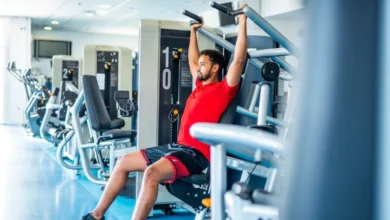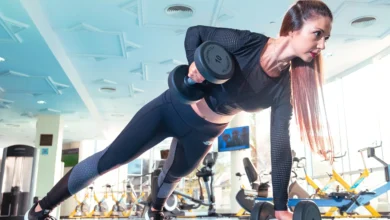HIIT vs. LISS: Which Cardio Burns More Fat and Accelerates Metabolism?
Which Cardio Burns More Fat

Choosing a cardiovascular method is one of the biggest questions for anyone seeking weight loss: should you invest less time at a very high intensity (HIIT) or follow a steady, longer pace (Low-Intensity Steady State or LISS)?
Both approaches are effective for calorie burning and improving cardiovascular health, but science shows they impact the metabolism very differently. The key to weight loss lies not only in the calories burned during the exercise but also in what happens in your body afterward.
READ ALSO:
- Quick Exercise for Lower Back Pain Relief: Simple Moves That Work
- Does Running Help You Lose Weight? How to Start and Progress Without Losing Your Breath
Follow our PAGE
The Intensity Secret: Why HIIT Burns More Fat in Less Time
HIIT (High-Intensity Interval Training) gained popularity for delivering fat-burning results in short, 15-to-30-minute sessions. The method alternates brief periods of maximum effort (like 30-second sprints) with short periods of active recovery or rest.
The EPOC Effect: Post-Workout Fat Burn
The major differentiator of HIIT is the EPOC (Excess Post-Exercise Oxygen Consumption) or the “afterburn effect.”
- What it is: After an intense HIIT session, your body requires a high amount of oxygen consumption to return to its resting state, replenish energy stores, and balance hormones.
- Action on Metabolism: This recovery process demands a significant calorie expenditure that lasts for hours after the workout is finished. It’s your body burning fat to recover from metabolic stress, even while you are at rest.
- Muscle Preservation: The high intensity of HIIT stimulates the production of hormones like GH (Growth Hormone), which helps preserve muscle mass while you shed fat.
Low-Intensity Steady State (LISS): Gradual Efficiency
LISS (Low-Intensity Steady State) is traditional cardio, such as walking, light jogging, or cycling at a constant pace for an extended period (30 to 60 minutes or more).
Advantages and Disadvantages of LISS
Slow cardio is excellent for several reasons but has drawbacks regarding “time efficiency”:
- Burning During Exercise: LISS keeps your heart rate in the “fat-burning zone” for longer. It is highly effective at fat oxidation during the workout itself, making it ideal for those with more time available.
- Low Impact and Recovery: This is the preferred method for beginners or those with joint restrictions, as the lower intensity is easier to sustain and requires less recovery time.
- Low EPOC: The main disadvantage is the low EPOC. As soon as you stop exercising, the extra calorie expenditure virtually ceases immediately.
Direct Comparison: Which Strategy is Best?
| Feature | HIIT (High Intensity) | LISS (Slow Cardio) |
| Average Duration | 15 to 30 minutes | 30 to 60 minutes |
| Post-Workout Calorie Burn (EPOC) | High (burns for hours) | Low (ceases quickly) |
| Metabolic Adaptation | Harder to plateau the metabolism | Body adapts quickly, requiring more time |
| Joint Impact | Higher (requires careful execution) | Low (ideal for recovery) |
| Main Benefit | Speed and visceral fat loss | Improved endurance and recovery |
The Optimized Conclusion: Combination Wins
Although HIIT is technically more efficient at accelerating metabolism and maximizing fat burn in the shortest time possible (thanks to EPOC), it should not be your only tool.
The best weight loss plan is neither HIIT nor LISS alone, but a strategic combination of both:
- Use HIIT in 2 to 3 weekly sessions to generate the metabolic spike, rapid fat loss, and the EPOC effect.
- Use LISS (such as walking or light cycling) on rest days or after strength training to aid in active recovery and increase total daily calorie expenditure without overstressing the body.
The ultimate key to weight loss is a calorie deficit, and the best strategy is the one you can maintain with consistency over the long term.

Hello! My name is Alan Teixeira and I am passionate about helping people live healthier, more balanced lives. From mindful eating to daily habits that promote physical and mental well-being, I believe that small, consistent changes can lead to powerful transformations.
I created this blog to share practical tips, reliable information, and thoughtful insights that can inspire you to take better care of yourself—with balance, mindfulness, and positivity.
If you are looking to improve your health, nourish your body, and build a lighter, more fulfilling routine, you are in the right place. Welcome!





